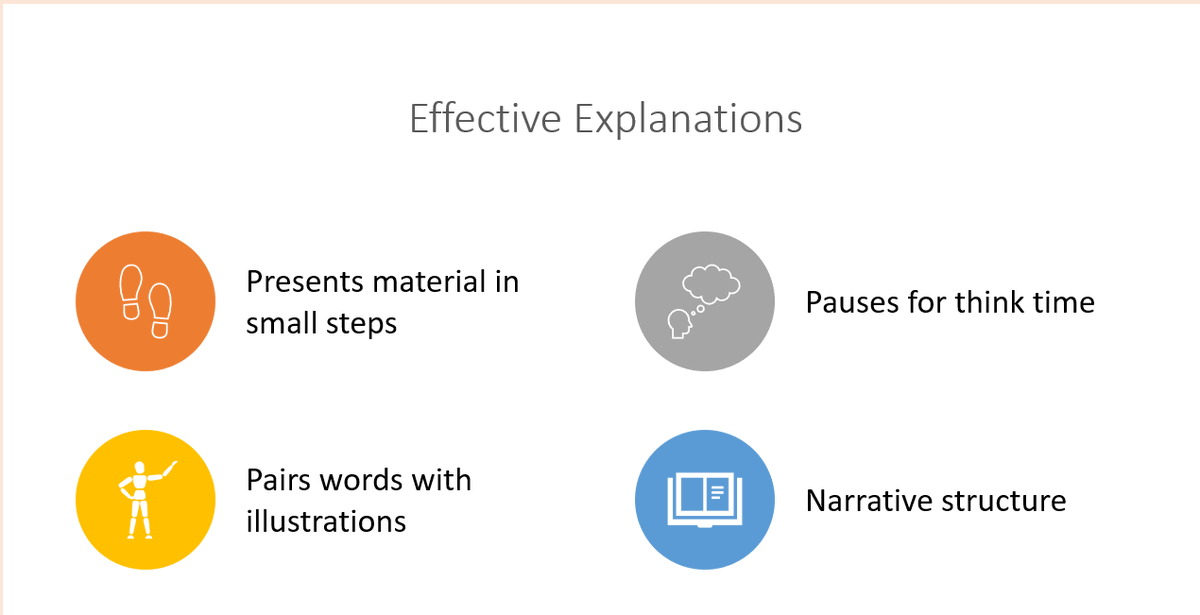Teaching is so weird because nobody seems to want to talk about how to explain things... which seems like it'd be something we'd talk a whole lot about. There are a few things I've learned from research into clarity of explanations that I wish I'd been taught earlier 1/
Vagueness. Using unclear sets of words or words that are uncertain will clutter an explanation. Researchers have manipulated vagueness and consistently find that it interferes with learning 2/

Mazes. Mazes are false starts and the use of redundant words. They also include utterances such as "uh" and "um". They're probably called mazes because it feels like navigating a maze of incoherence from the learner's perspective 3/

Discontinuity. We shouldn't add extra content or mention relevant content at inappropriate times. Discontinuity leads to a loss of lesson momentum - the pace feels off. 4/

Seductive Details. These are interesting and even entertaining pieces of information that distract from the main message. Humorous, sexy, and unrelated pictures and tangents should be cut from explanations 5/

All these things you're not supposed to do while explaining, but what SHOULD you do? There's a lot of things you can do, here are some basics. Present material in small steps. Pause for think time. Pair words with illustrations. Use a narrative structure. 6/

And it's always a good idea to alternate between presenting information and having students do something with the information. This allows you to hold attention and check for understanding so you can re-explain if needed. Do this at a perky pace. 7/

Now it's time for me to go to teacher happy hour on a Friday. My last piece of advice is to practice explanations in advance, like to a partner, mirror, or in the car on the way to work. Practice makes the explanation more fluent and frees up working memory for other things /end
References:
researchgate.net/publication/27…
